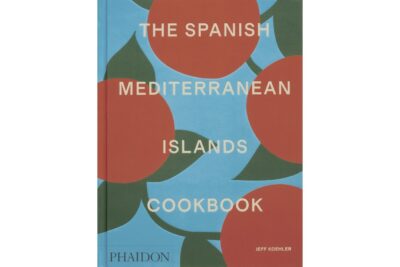Humble fish stew showcases the underappreciated cuisine of Spain’s Balearic islands
By Canadian Press on June 18, 2025.

In the shadow of an imposing stone bell tower, market stalls fan out by the dozens from the central plaza of Sineu, Mallorca.
Every Wednesday, vendors fill the surrounding streets with produce from the fertile central plain of the Spanish Mediterranean island. Interspersed among the plump tomatoes, leafy chard and bright citrus are more stalls overflowing with handcrafts, textiles, jewelry and more.
The scene plays out much like it has every week since at least the early 1200s. Designated a royal market in 1304, it’s the only remaining market in Spain’s Balearic Islands allowed to sell live rabbits, poultry and farm animals.
Naturally, the produce changes with the season, showcasing products that define a cuisine that’s little known outside the Balearic Islands.
Although the islands are better known for their pristine beaches and sun-drenched cliffs, Jeff Koehler’s new book, “The Spanish Mediterranean Islands Cookbook,” aims to give the food some worthy attention.
“It’s only a 30-minute flight from Barcelona,” said Koehler. “But it’s amazing to see that it has its own culinary culture.”
Mallorca is the biggest of the Mediterranean chain, which also includes Ibiza, Formentera and Menorca, where Koehler, an American, has lived part time for 15 years. Much of the diet is classic Mediterranean, with lots of olive oil, legumes and fresh vegetables.
But Koehler said the islands differ from the rest of the region because they were so isolated. The cuisine developed with few outside influences, with locals relying on heavily on fishing, foraging and preserving to survive the winter.
Restriction led to creativity. As an example, he cited the moment in springtime when fava beans are suddenly everywhere in springtime.
“Then you start thinking of five ways of making fava beans because it’s what’s there now,” he said. “What starts as this necessity of just survival eventually converts into real gastronomic treats.”
Locals may pair favas, or broad beans, with mint, spring onions and sobrassada, a paprika-spiced, uncased pork sausage that’s like a spreadable chorizo. Or they add them to a frittata-like Spanish tortilla, or use them with cuttlefish, bacon and onions.
The result in each case is a humble yet tasty dish, a combination that is typical of the islands.
One of the most representative is caldereta de peix, a simple fish stew that is served over slices of toasted day-old bread. Originally prepared with the worthless bycatch that got caught in fishermen’s nets, it features a saffron-scented tomato broth with garlic, onion and white wine.
The bold flavor is much more than the sum of its parts, and it exemplifies how leftovers can become a delicious classic.
“First came the need to eat,” Koehler writes. “Then came the desire to eat well.”
Caldereta de peix (Fish stew)
From Jeff Koehler’s “The Spanish Mediterranean Islands Cookbook”
Time: About an hour, 10 minutes
Serves: 4
Ingredients:
One 3- to 4-pound whole fish, such as scorpion fish, bream, sea bass or red snapper, or another firm-fleshed variety. Or 1 1/2 pound filets
3 tablespoons olive oil
2 medium yellow onions, finely chopped
1 clove garlic, minced
3 medium tomatoes, halved and grated
1/4 cup dry white wine
8 cups fish stock
1 teaspoon sweet paprika
Small pinch of saffron threads, crumbled
Very thin slices of day-old country-style bread, cut into 2.5-cm/1-inch-wide strips and lightly toasted, for serving
Directions:
Cut the fish crosswise into thick steaks. Reserve the heads and tails.
Heat the oil in a Dutch oven over medium. Add the onions and cook until soft, 8–10 minutes. Stir in the garlic and then add the tomatoes. Cook until pulpy and deeper red, about 10 minutes, adding a few tablespoons of water (or stock) from time to time to keep it moist. Add the wine and cook for 2 minutes. Stir in 1 cup of the stock.
Use a hand blender to puree the sauce, or transfer it to a blender to puree and return it to the pot. Stir in the paprika and saffron, and season with salt and pepper.
Season the fish steaks and reserved heads and tails (if using whole fish) with salt and pepper and add to the pan. Pour over the remaining stock. Bring to a simmer over medium heat and simmer, uncovered, for 15 minutes. Don’t let it reach a strong boil, to keep the fish from breaking apart.
Remove the pot from the heat. Remove and discard the heads and tails. Cover the pot and let sit for 10 minutes.
To serve, put a couple of pieces of toasted bread in each of 4 wide soup bowls. Ladle over the soup with 1 or 2 pieces of fish per bowl.
EDITOR’S NOTE: Albert Stumm writes about food, travel and wellness. Find his work at https://www.albertstumm.com
Albert Stumm, The Associated Press
-44




